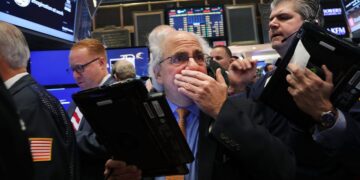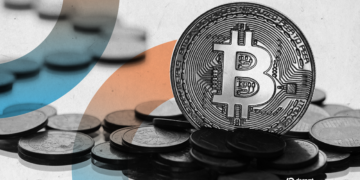The BSE Sensex rose 1,200 points, or 1.48%, to close at 82,530, while the NSE Nifty gained 395 points, or 1.60%, to settle at 25,062.
Sectorally, Nifty Financials rose 1.3%, Auto gained 1.9%, IT added 1.2%, and Metal advanced 1.7%. Broader markets also saw gains, with both the small-cap and mid-cap indices rising around 0.7% each.
The market capitalisation of all BSE-listed companies surged by Rs 5.05 lakh crore, reaching Rs 439.94 lakh crore.
Here are five key factors behind the rally:
1) Zero-tariff trade deal talk with the US
In a major development from Doha on Thursday, US President Donald Trump revealed that India has offered a trade deal to the United States, which would see “basically zero tariffs” on a broad range of American goods, reported Reuters.
“India offered US a deal, basically zero tariffs,” the Republican leader said during the second leg of his three-nation West Asia tour.Trump’s latest comments follow his earlier remarks on April 30, when he said that talks with India on tariff issues were “going great” and expressed confidence in reaching a final deal soon. Speaking at an event in Michigan, he noted, “India tariff talks are going great, think we’ll have a deal soon.”According to a report by Reuters on May 9, India had proposed to reduce its average tariff differential with the US from around 13% to under 4%—a 9-percentage-point drops. This would be among the most comprehensive moves by India to align its trade policies with major global partners.
2) Crude Impact
Oil prices fell over $2 on Thursday amid expectations of a potential U.S.-Iran nuclear deal, which could ease sanctions and increase global supply.
Brent crude dropped 3.5% to $63.79 per barrel, while WTI crude fell to $60.89. Lower oil prices help ease inflation concerns and reduce India’s import bill, supporting domestic markets.
3) Sharp drop in gold prices
Gold June futures on MCX fell to a one-month low of Rs 90,890 per 10 grams—down 1.5% from Wednesday’s close and over 8.5% from its recent peak. The correction comes amid easing geopolitical tensions, reduced demand for safe-haven assets, and a focus shifting to U.S. economic data and Federal Reserve policy.
Falling gold prices often indicate reduced risk aversion among investors, which supports higher allocations to equities and reflects improving market confidence.
4) Strong FII inflows
Foreign institutional investors have poured nearly Rs 50,000 crore into Indian equities since April 15, marking net inflows in 19 of the last 20 sessions. This trend follows a three-month phase of persistent outflows.
5) Weakening US dollar
The dollar index fell 0.24% to 100.8 on Thursday, down significantly from 109.88 in early February. A weaker dollar tends to benefit emerging markets like India by encouraging foreign inflows and strengthening the rupee.
6) Cooling inflation boosts rate cut hopes
Meanwhile earlier reported, U.S. consumer inflation rose just 0.2% in April, lower than the 0.3% expected by economists, easing concerns over further rate hikes by the Federal Reserve.
At the same time, India’s retail inflation dropped to 3.16% in April—its lowest level in six years and below the Reuters estimate of 3.27%. The data has raised expectations of a potential rate cut by the Reserve Bank of India, which could further support economic growth and market momentum.
“The market staged a robust rebound, closing with substantial gains, driven by a decline in domestic inflation and positive signals from the U.S. regarding a potential trade agreement with India,” said Vinod Nair, Head of Research, Geojit Investments Limited.
“Investor attention is now turning to the upcoming speech by the Federal Reserve Chair, which is anticipated to provide further clarity on the future policy trajectory, particularly in light of the recent easing in U.S. inflation data,” Nair added.
















